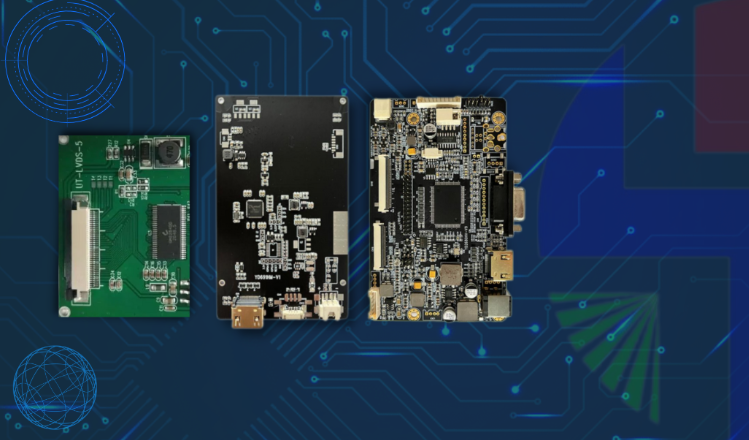
LCD controller boards are an integral component of modern display systems, providing the interface between the display panel and the host system.
They support a variety of input signals and provide the necessary processing and control functions to drive the display panel.
In this article, we will explore the concept of LCD controller boards, as well as the different types of interfaces they support and their respective uses.
The concept of LCD Controller Boards
LCD controller boards, also known as LCD driver boards, are electronic circuits that connect to the back of an LCD panel and control the display output.
They are responsible for converting input signals into the correct format for the specific display panel being used, and for controlling the timing and voltage levels of the signals to ensure the proper operation of the display.
What is the input signal of the LCD controller board?
The input signal refers to the type of signal that the LCD controller board receives from the host system.
Different types of input signals are used for different applications and display technologies.
Some common input signals include VGA (Video Graphics Array), DVI (Digital Visual Interface), HDMI (High-Definition Multimedia Interface), and DisplayPort.
VGA
It is an analog video signal that was commonly used in older computer systems.
VGA is limited to lower resolutions and refresh rates, making it less common in modern display systems.
DVI
It is a digital video signal that is commonly used in computer systems.
DVI supports higher resolutions and refresh rates than VGA and is still used in many display systems.
HDMI
It is a digital video and audio signal that is commonly used in consumer electronics.
HDMI supports high resolutions and refresh rates and is used in many modern display systems.
DisplayPort
It is a digital video and audio signal that is commonly used in computer systems.
DisplayPort supports high resolutions and refresh rates and is becoming more common in modern display systems.
These signals provide different levels of resolution, color depth, and refresh rate, and the LCD controller board must be able to process these signals to display the correct image on the LCD panel.
What is the interface of the LCD controller board?
The interface of an LCD controller board refers to the method by which the board communicates with the LCD panel.
Different types of interfaces are used for different types of LCD panels, such as TN, IPS, and VA.
The most common types of interfaces are LVDS (Low Voltage Differential Signaling), TTL (Transistor-Transistor Logic), and eDP (Embedded DisplayPort).
LVDS
LVDS is a commonly used interface for LCD panels, particularly in larger displays.
It offers high bandwidth and low power consumption, making it ideal for driving high-resolution displays.
TTL
TTL is another commonly used interface for LCD panels, particularly in smaller displays.
It is a simple interface that is easy to implement and requires minimal wiring.
eDP
eDP is a newer interface technology that is becoming more common in modern display systems.
It is a high-speed, low-power interface that provides higher bandwidth than LVDS, making it ideal for driving high-resolution displays.
In summary, the interface of an LCD controller board is the method by which the board communicates with the LCD panel.
These interfaces provide different levels of bandwidth, power consumption, and signal quality, and the LCD controller board must have the appropriate interface to connect to the LCD panel.
The Advantage of LCD Controller Boards
Multiple Input Signal Support
Display Panel Compatibility
Advanced Display Functions
Customization
Easy Integration
Cost-effective
The Disadvantage of LCD Controller Boards
Limited Compatibility
Complexity in Configuration
Limited Upgradability
Compatibility with Future Technologies
Single Point of Failure
Conclusion
All in all, LCD controller boards offer a range of advantages for modern display systems.
They support multiple input signals, work with a wide range of LCD panels, provide advanced display functions, can be customized to meet specific requirements, are easy to integrate, and are cost-effective.
These advantages make them a popular choice for use in many different applications, including gaming, media, industrial, and medical applications.

